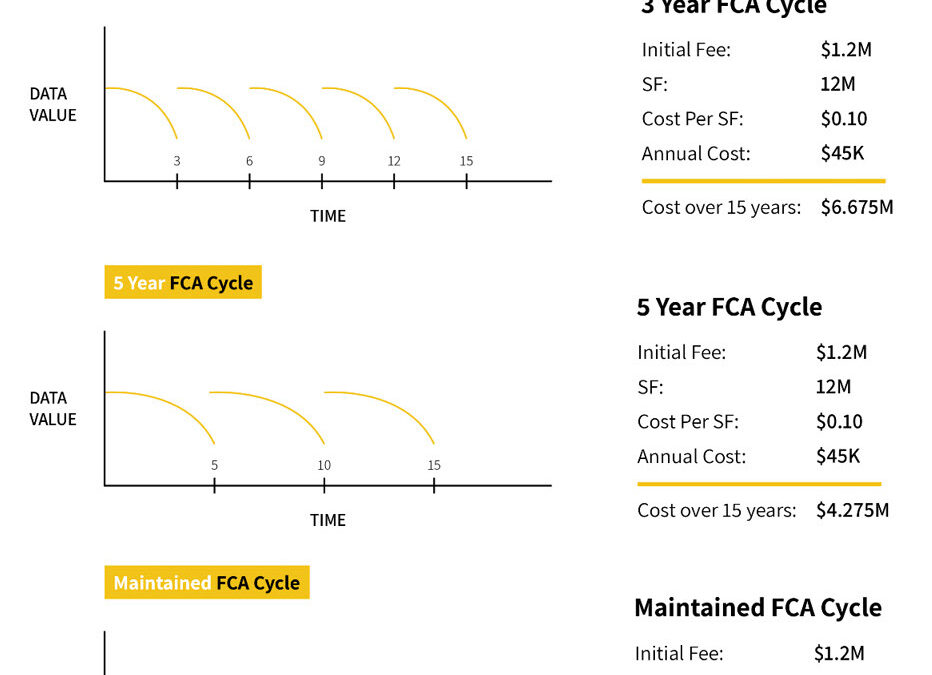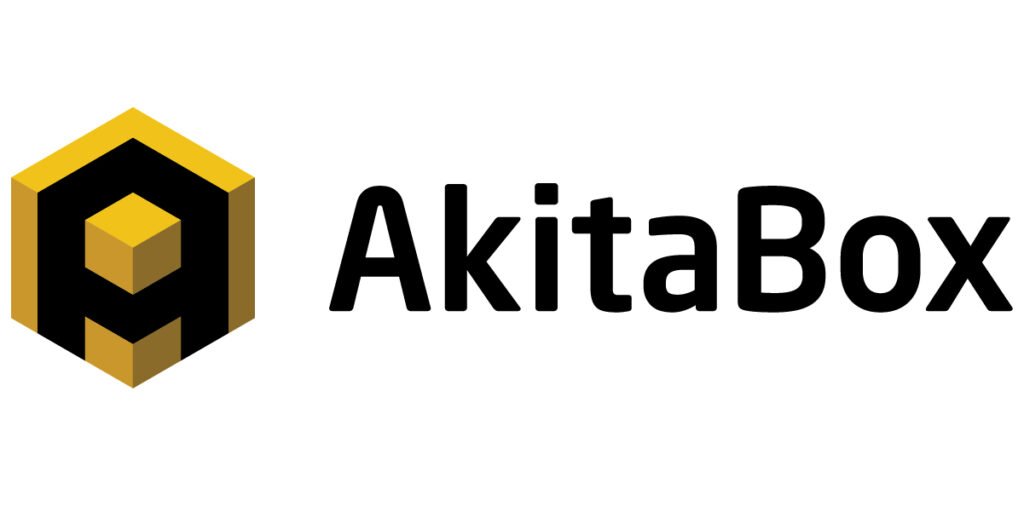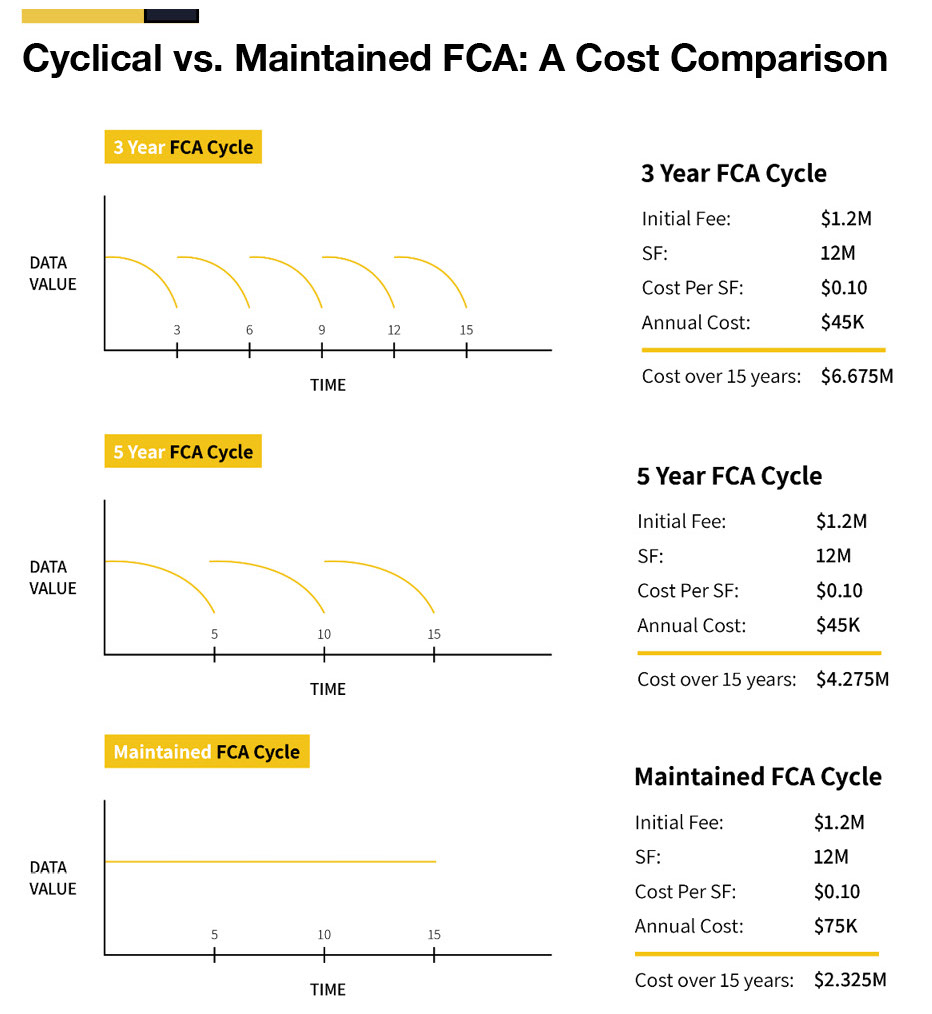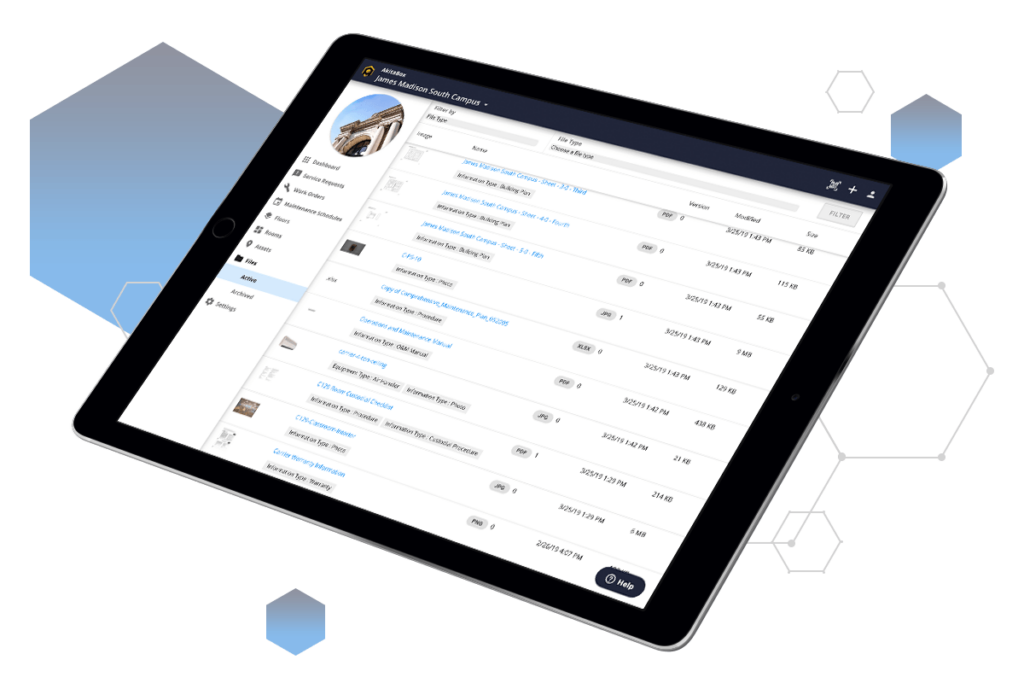How Facility Condition Assessment data contributes to overall lifecycle management of equipment and, ultimately, the building or campus

In Part 1, Data for all! In one place and always current. A Facility Condition Assessment will reveal everything, of Eileen McMorrow’s interview with Josh Lowe, co-founder and chief solutions officer, AkitaBox, he explained how traditionally, Facility Condition Assessments (FCA) of buildings were performed by A/E firms every five to seven years. That’s no longer acceptable. Contemporaneous data on buildings is in demand as property owners want to know how their real estate is performing or serving the needs of the business or the university campus.
In Part 2, below, Lowe details how new software enables the availability of up-to-the-minute data to be accessible to the facility and building management team and all the technicians who service building equipment.
How does the living FCA benefit the broader lifecycle of facility data?
Lowe: FCA is about checking in and getting validation. We all know what industry standard really means for the lifecycle of a product. You know you may get more time, but maybe an FCA demonstrates that the item is close to end of life. Industry remaining life or estimated or observed remaining life that shows you can get X more years is useful data. You then make a decision that impacts the FCA and spending decisions.
Why do living FCAs make sense as part of the lifecycle?
Lowe: I walk into facilities and onto campuses with chillers installed in the 1970s and ‘80s, and they are old, but functioning. The lifecycle should be for the life of the asset and most things do not outlive the building shell. Data is for the lifecycle of each asset in the building, and it applies to the whole building. When the data was treated as transactional, the data died with the last touch point. Each person encountering an item for service must re-pull organic data on it. It is transactional, when we should be maintaining it for the full lifecycle of the equipment and the facility.
What are the key barriers to implementing living FCAs and improving the lifecycle of data?
Lowe: The biggest challenge is convincing people they can do it. It does really work, but they cannot do facility assessment the old way. People think they do not want to spend time maintaining data however, it is cheaper to maintain an FCA than to do it cyclically. Status quo is the biggest issue in the industry. It is 43% less costly to maintain an FCA over 10 years.
Expand on why FMs can’t do a continuous FCA or maintain their FM data even though they want to.
Lowe: Some of the reasons are:
- Decentralized data–silos, no single source of truth;
- Hodge podge of different tools that don’t work well together–FCA uses one tool, maintenance uses another, etc. No single platform that manages all FM needs;
- Managing data too broadly–not enough granularity (not managing at the asset level); and
- Data loss/waste–data must be manually moved between tools.
What are tools/strategies for better data lifecycle management that ultimately leads to better capital planning? Discuss how to get started with living FCAs.
Lowe: It comes with a mindset change. You must admit there’s a problem and go after the problem. Finding a new way, the solutions, and tackling them. The interconnectedness of this matters. The maintenance of the asset is reactive work once a month for the past year and has an impact on the equipment capital plan. You can make it part of the workflow, so every time you touch the asset, it gets built into the process. Clients do preventive maintenance, but the techs need to look at the equipment while doing the work and record if it looks better, the same or worse. It just adds a minute to each task to obtain the service data and condition.
How does a manager bring all facilities data into one place for easy access?
Lowe: Start by identifying where facilities data lives. Sometimes there are too many pieces of software and too many people recording information for one data point. Who needs 28 different pieces of software? You need to know where the data lives and who maintains it.
AkitaBox allows you to see the benefit of who maintains the data across the organization. Databases should not look different from each other and you want the data to look alike for all users.
What should FMs look for in FM/FCA/CM software tools?
Lowe: Usability. The number one thing for the tool is how usable and how easily you can train someone using an iPad.
- How quickly can I train them to be productive and useful in getting the data?
- Does it calculate the lifecycle correctly? It starts with good data collection.
- Reporting. Simple reporting tools that help collect the data. Does the software tell a story with the data?
- Depending on the type of assets they have, the stories change. Whatever tool you use needs to be flexible enough to tell your story.




